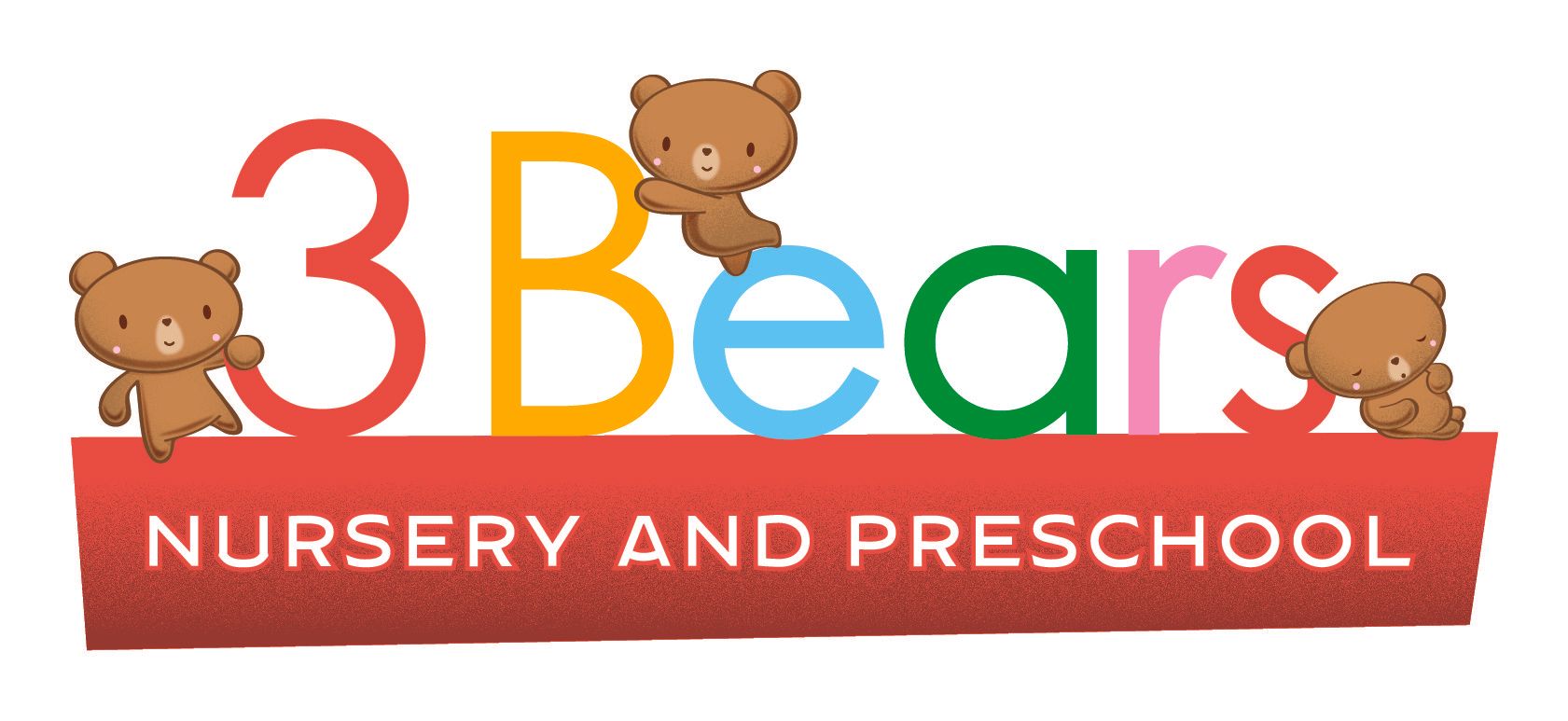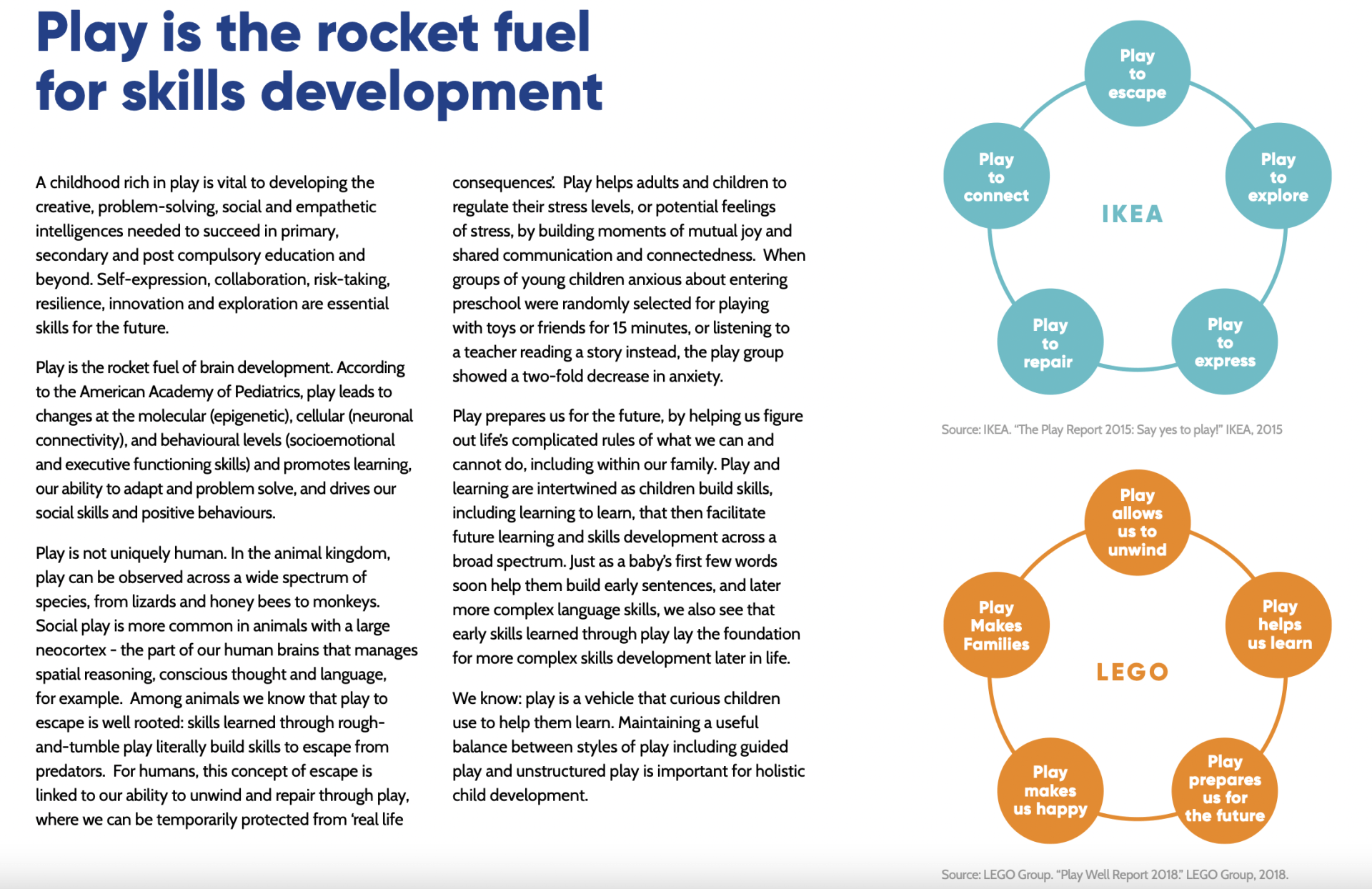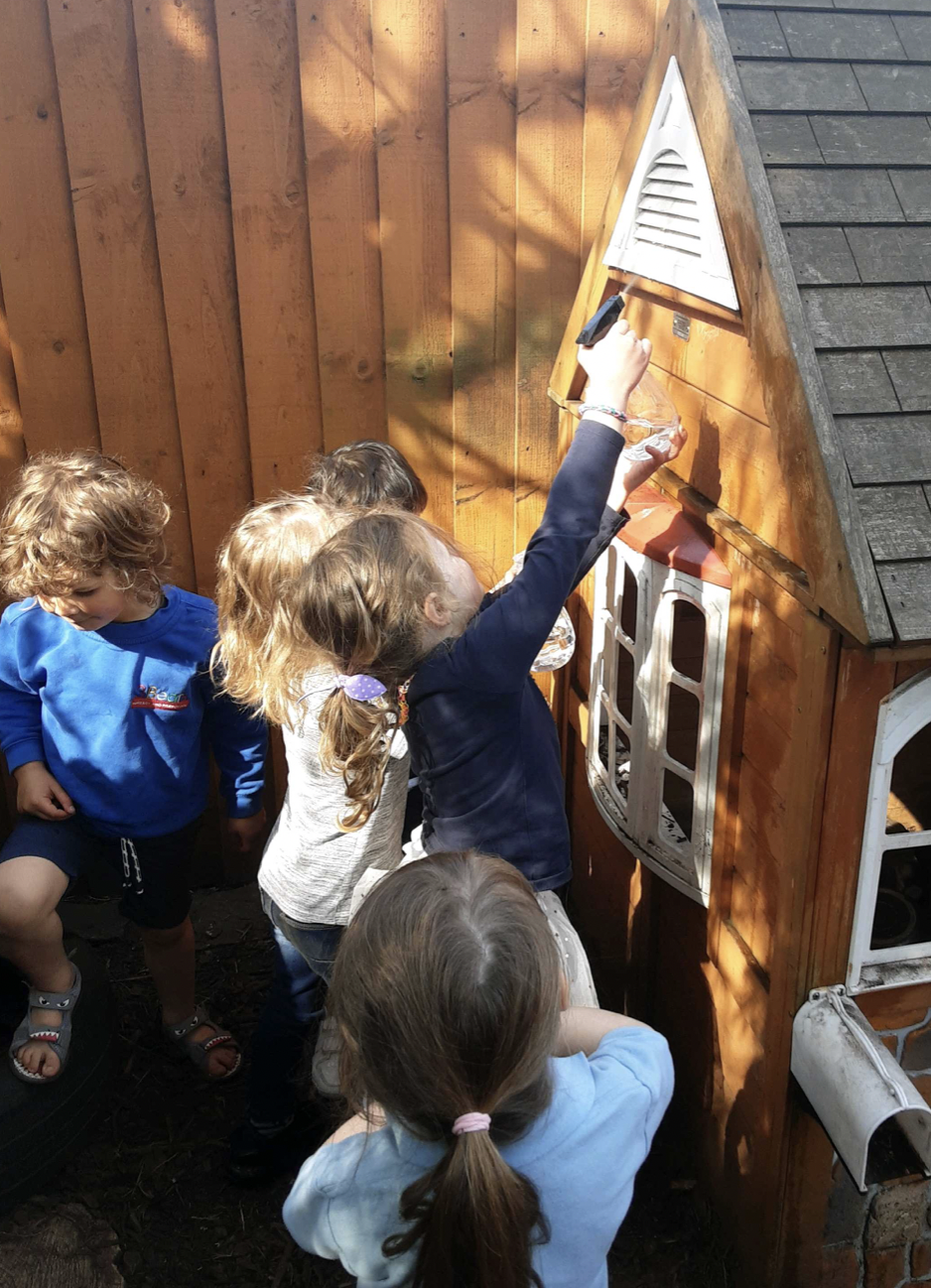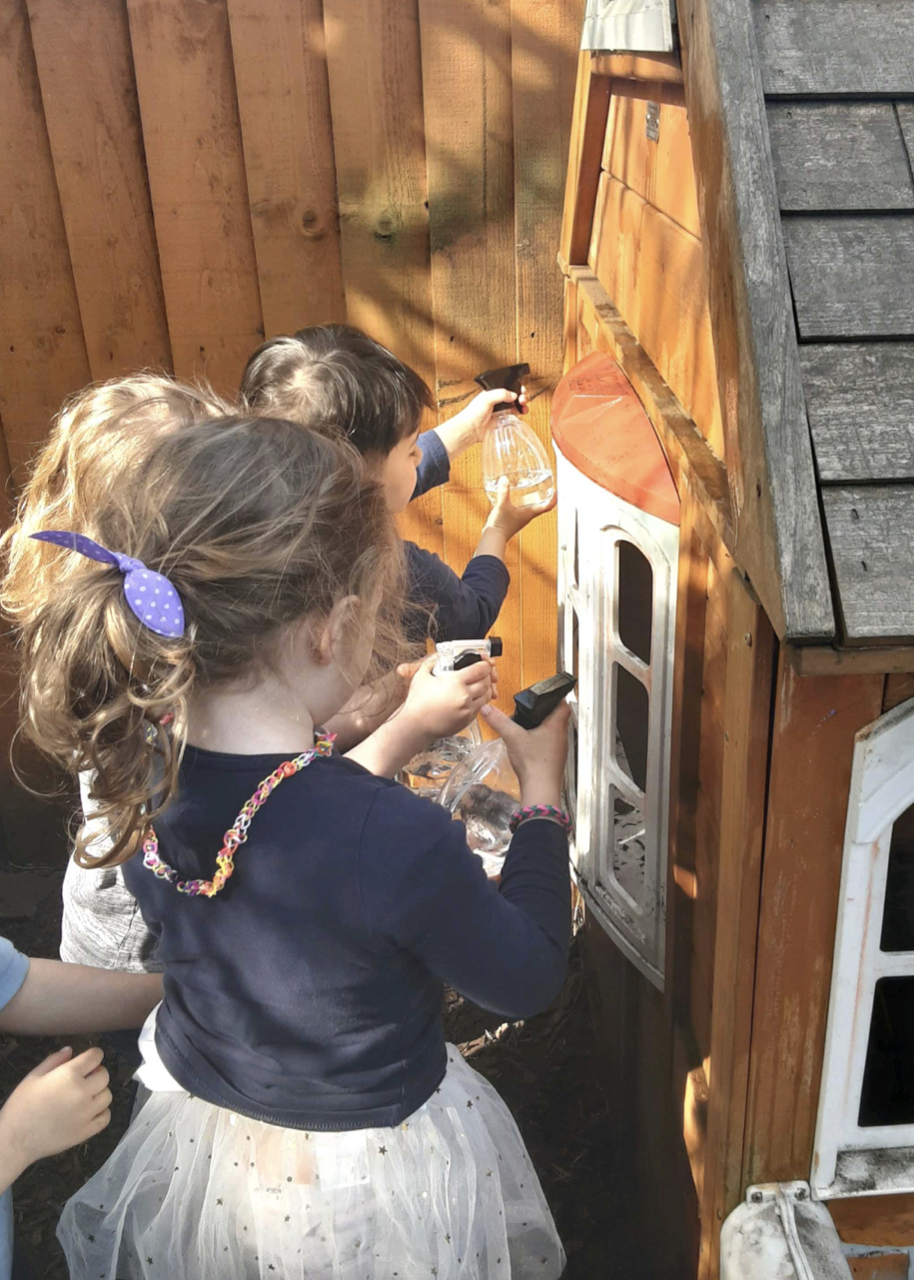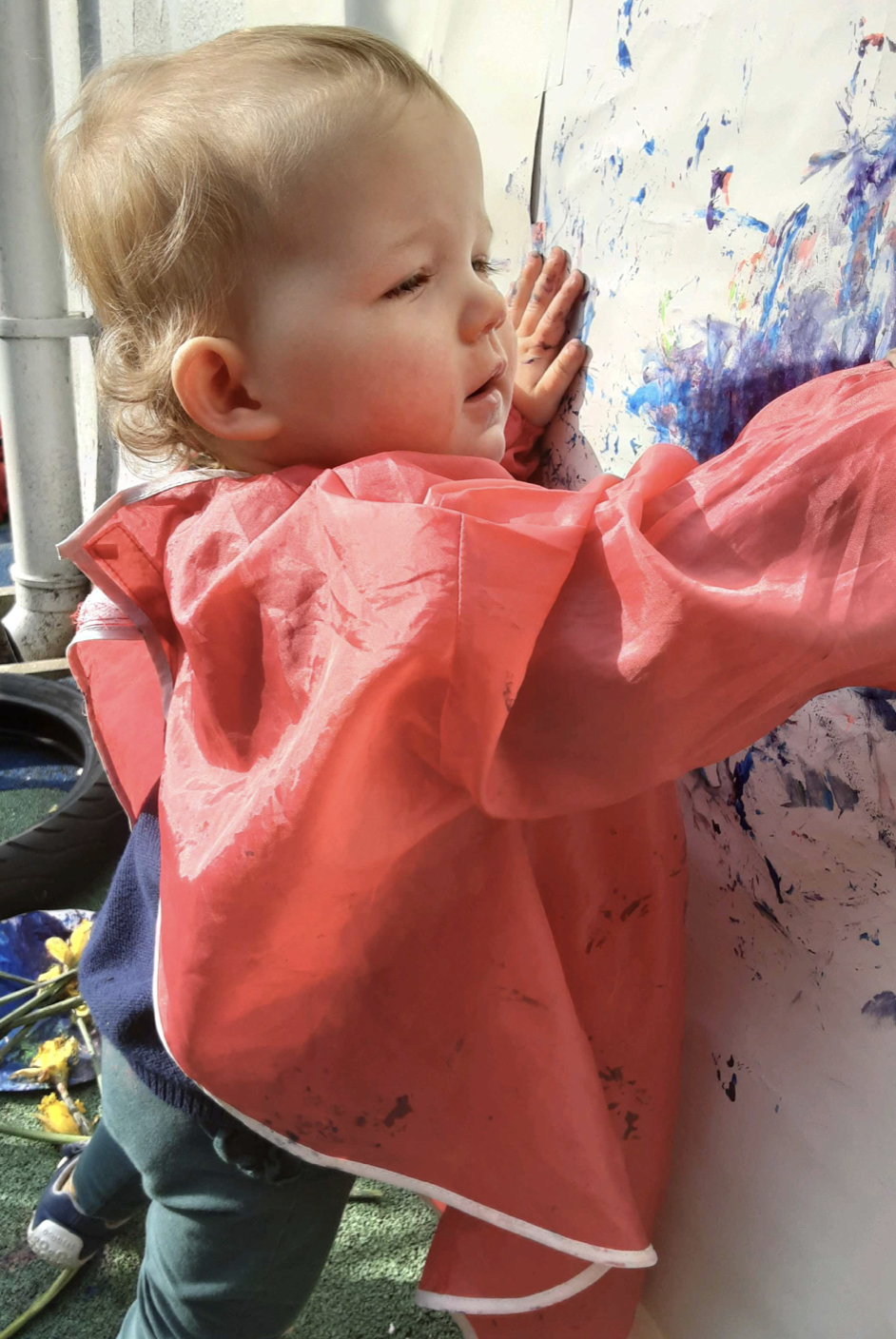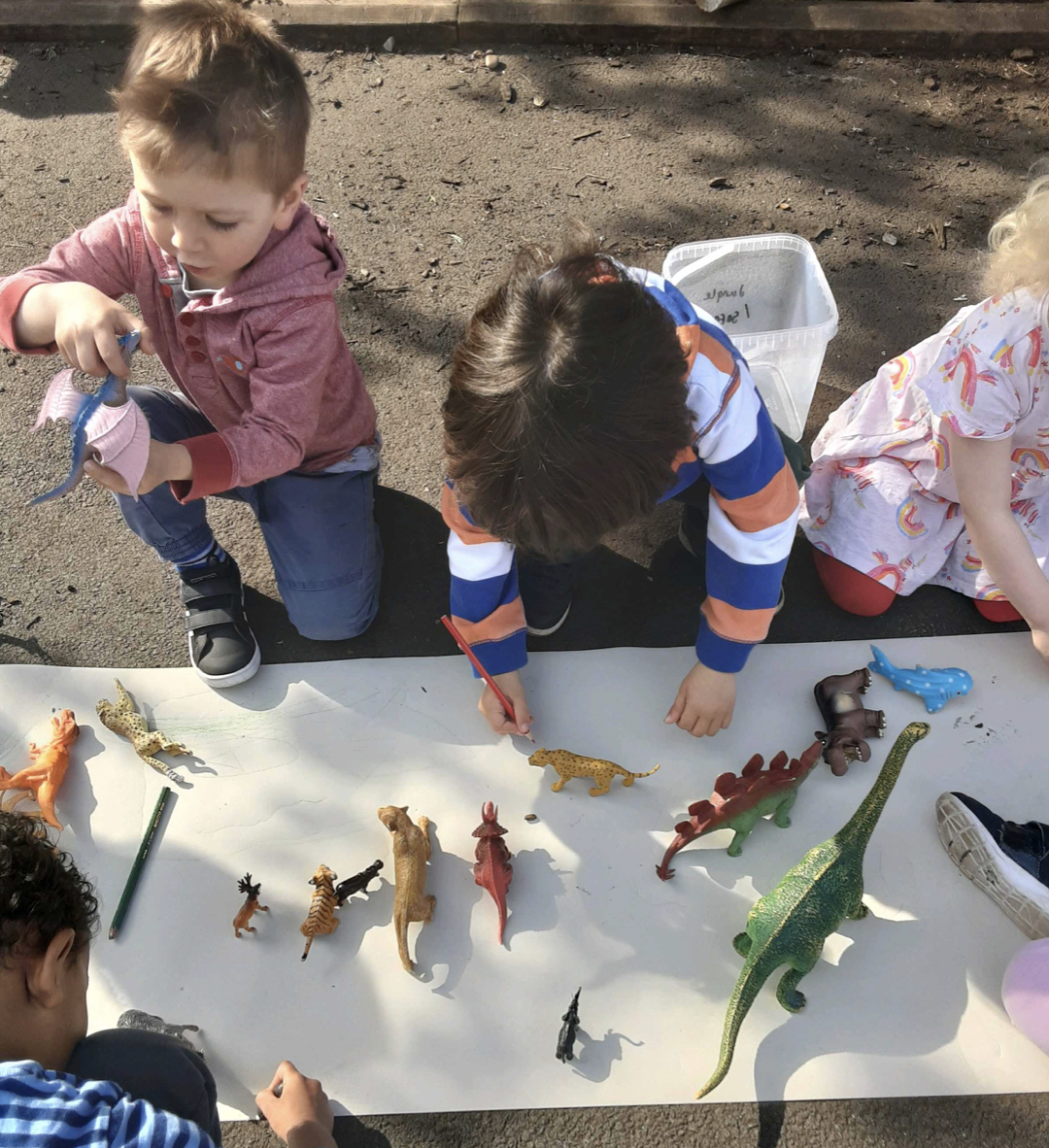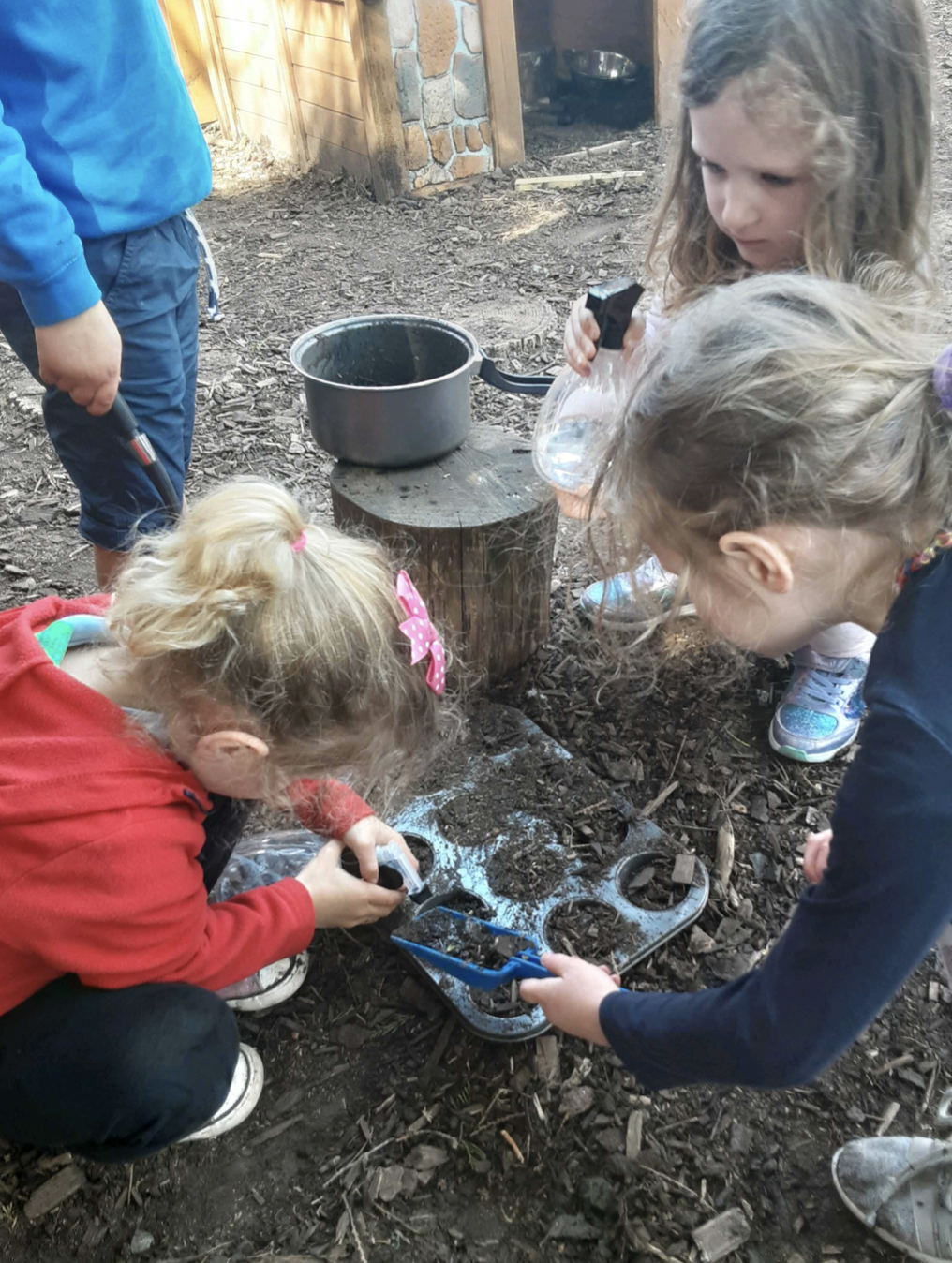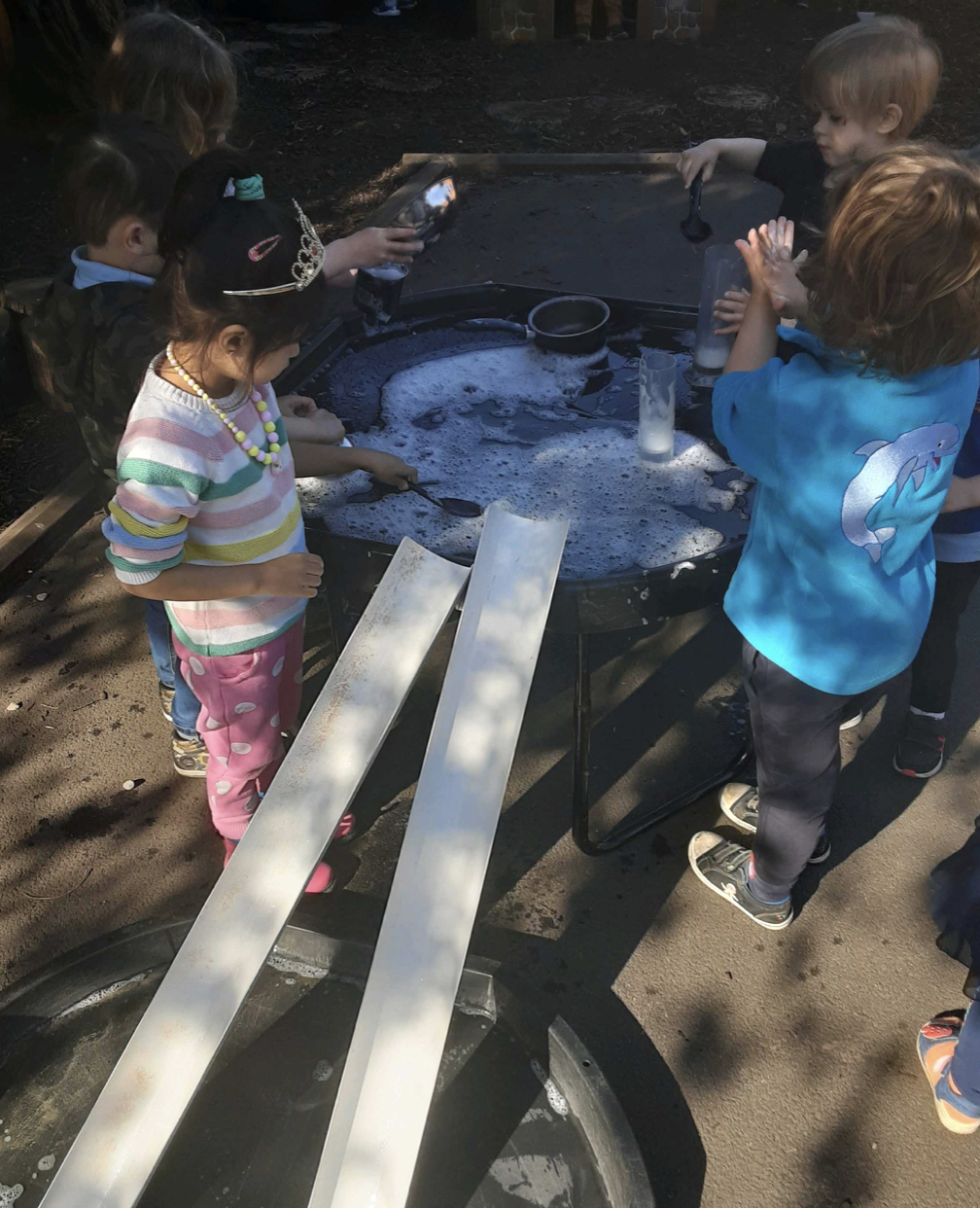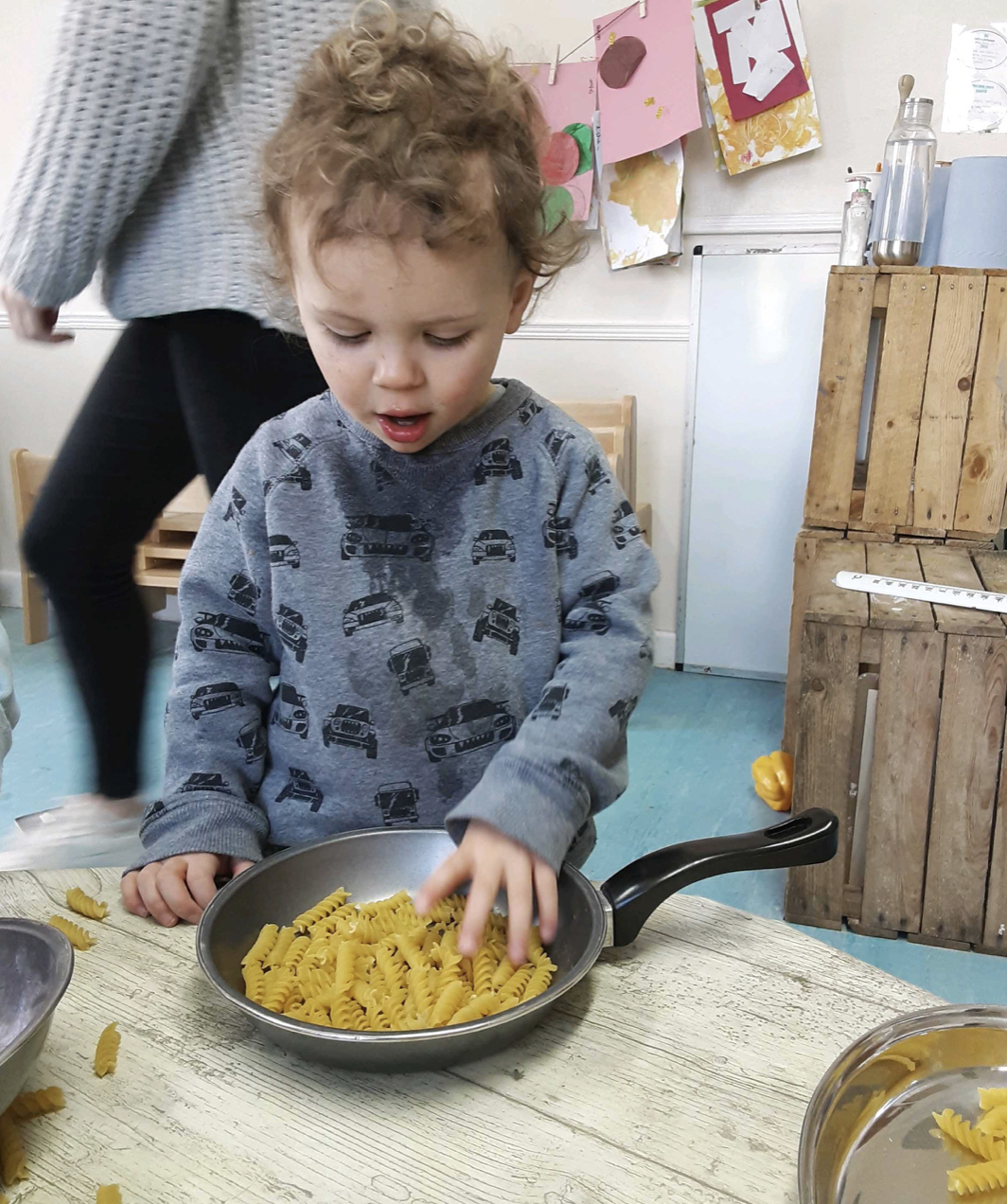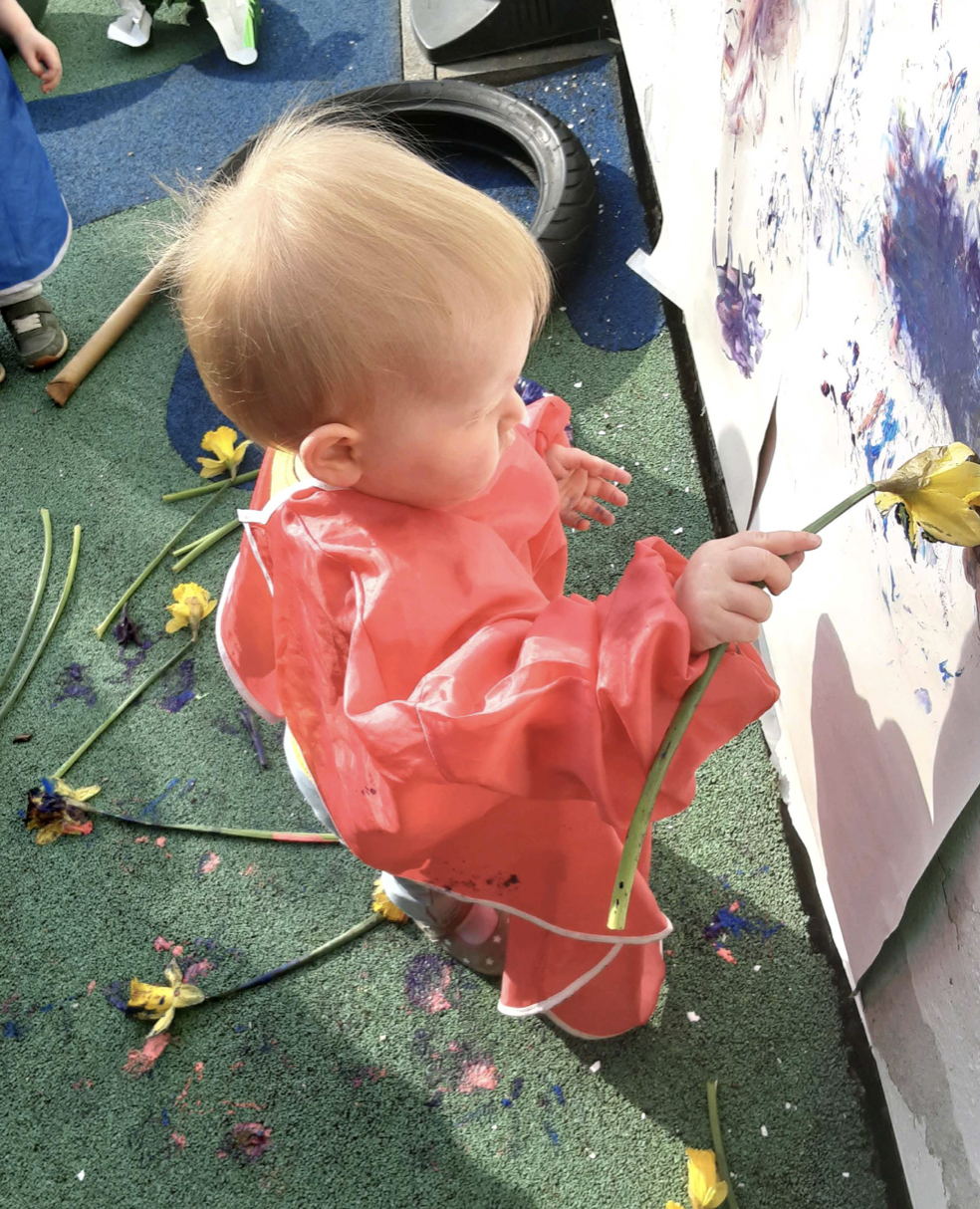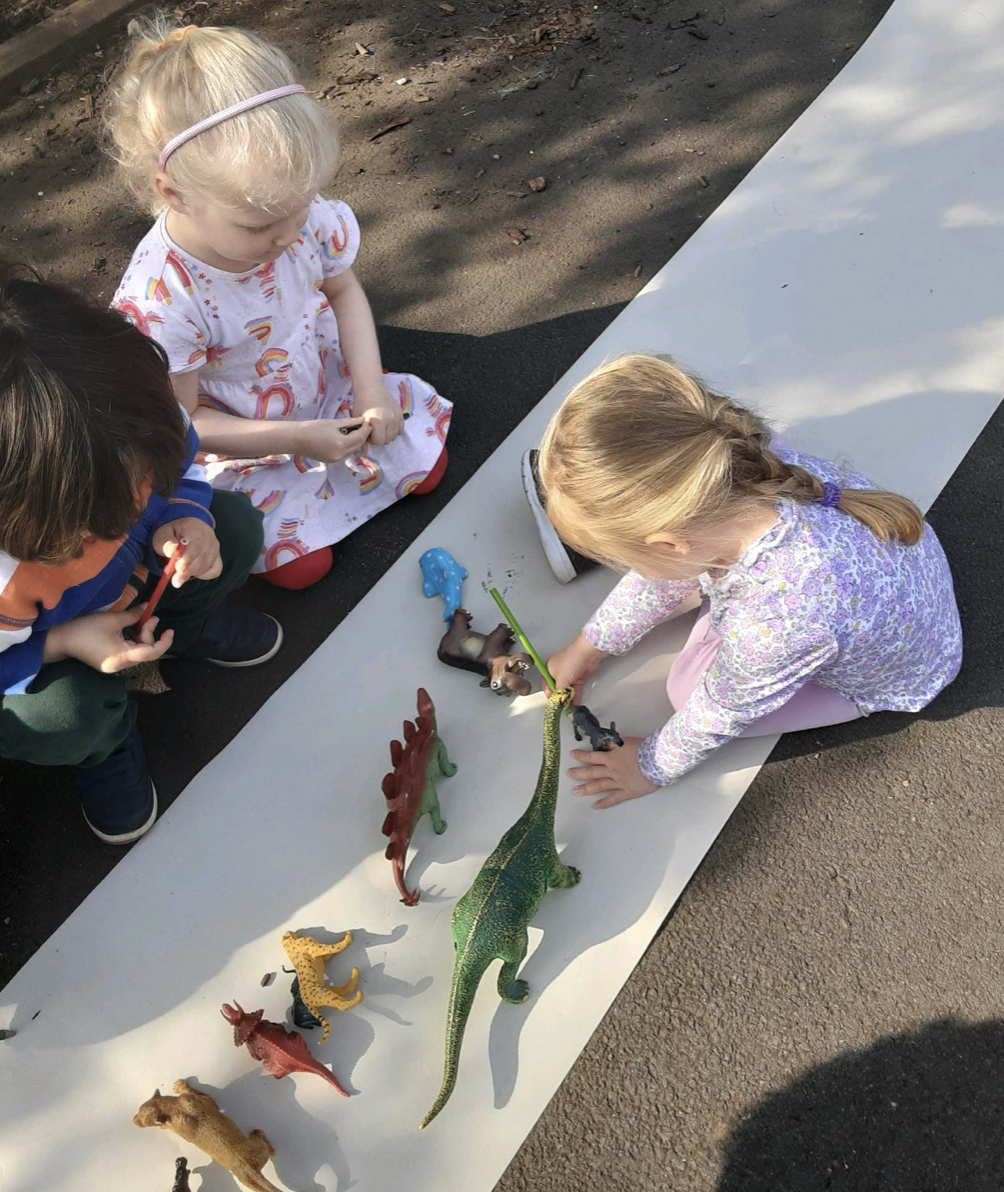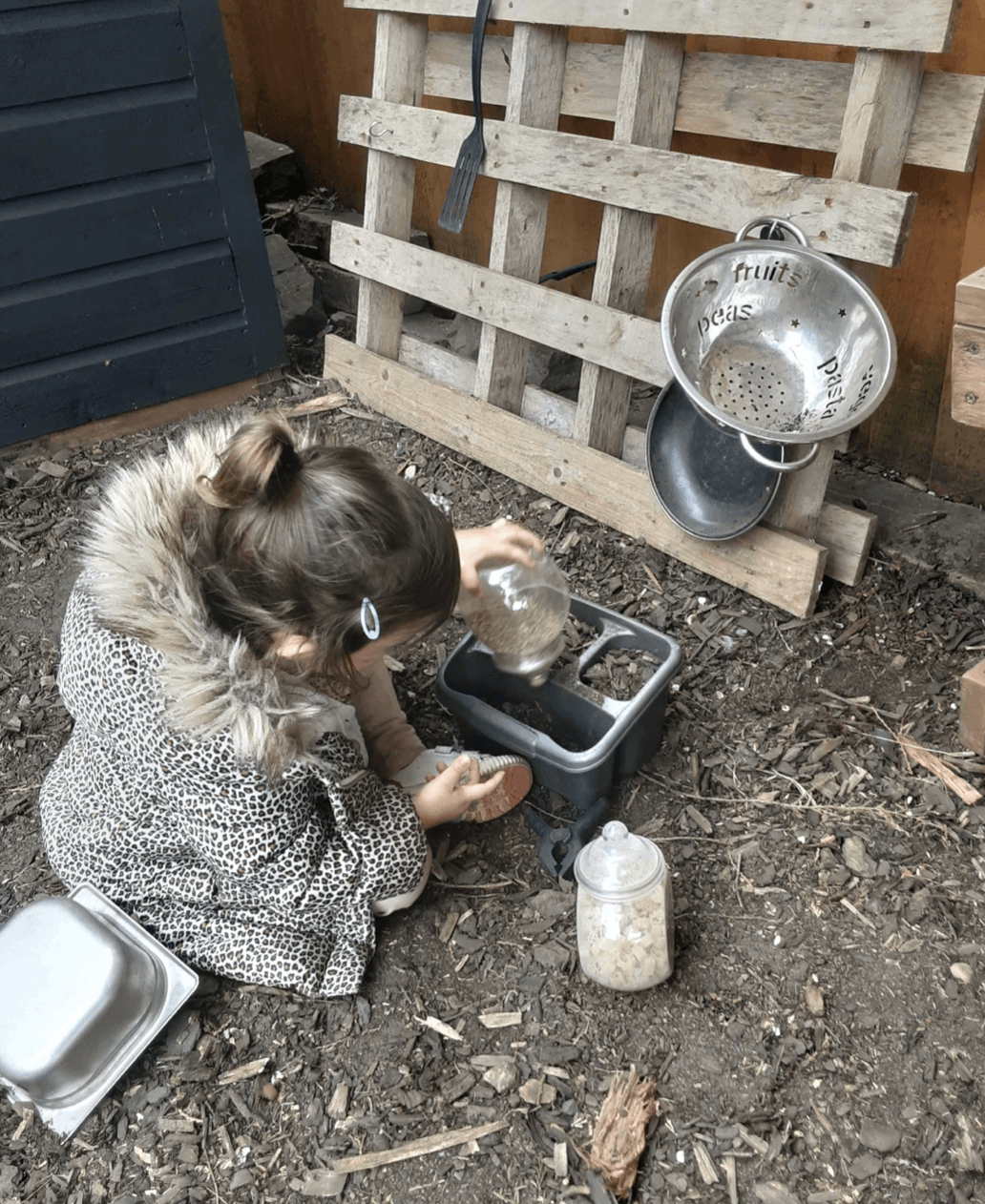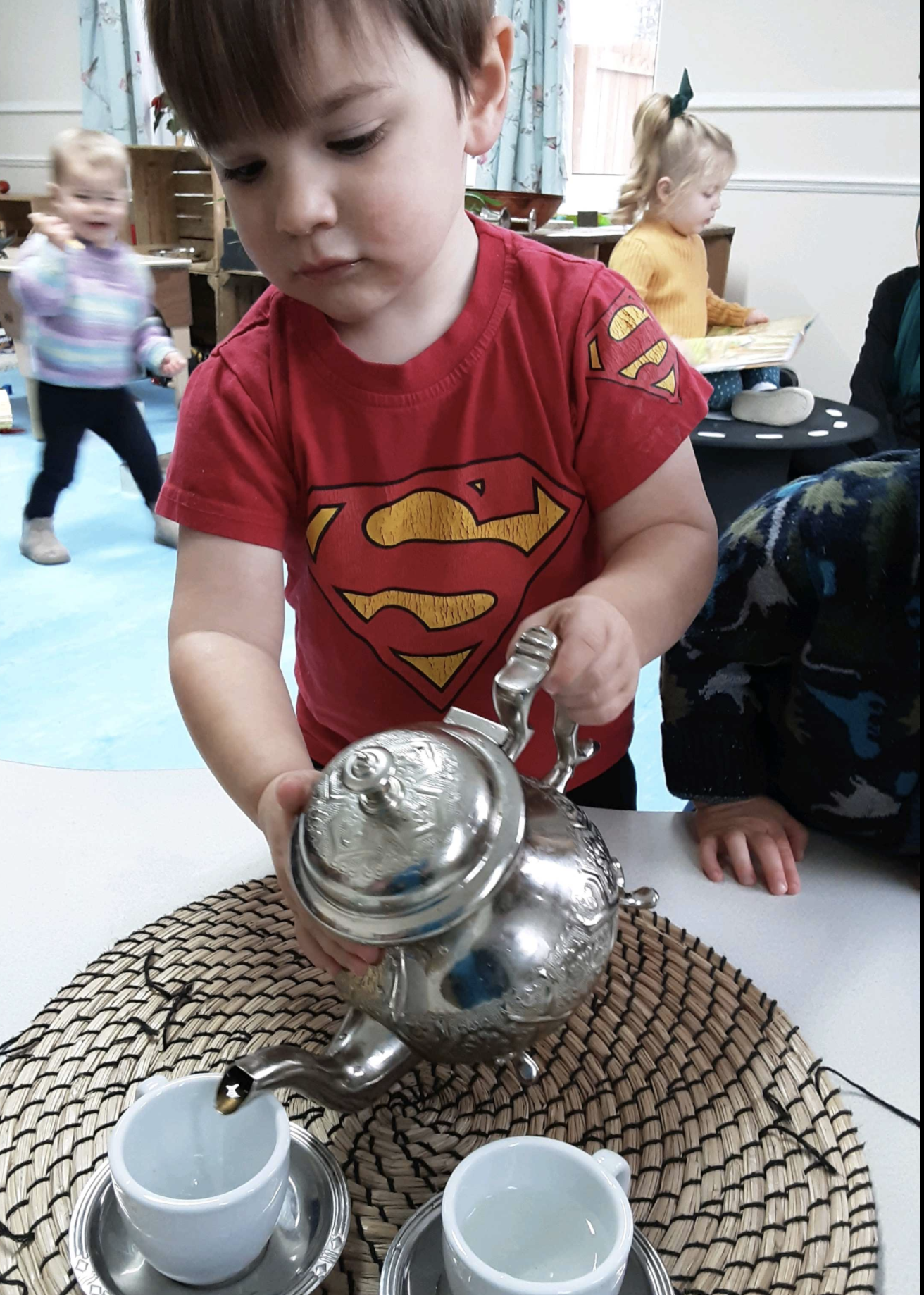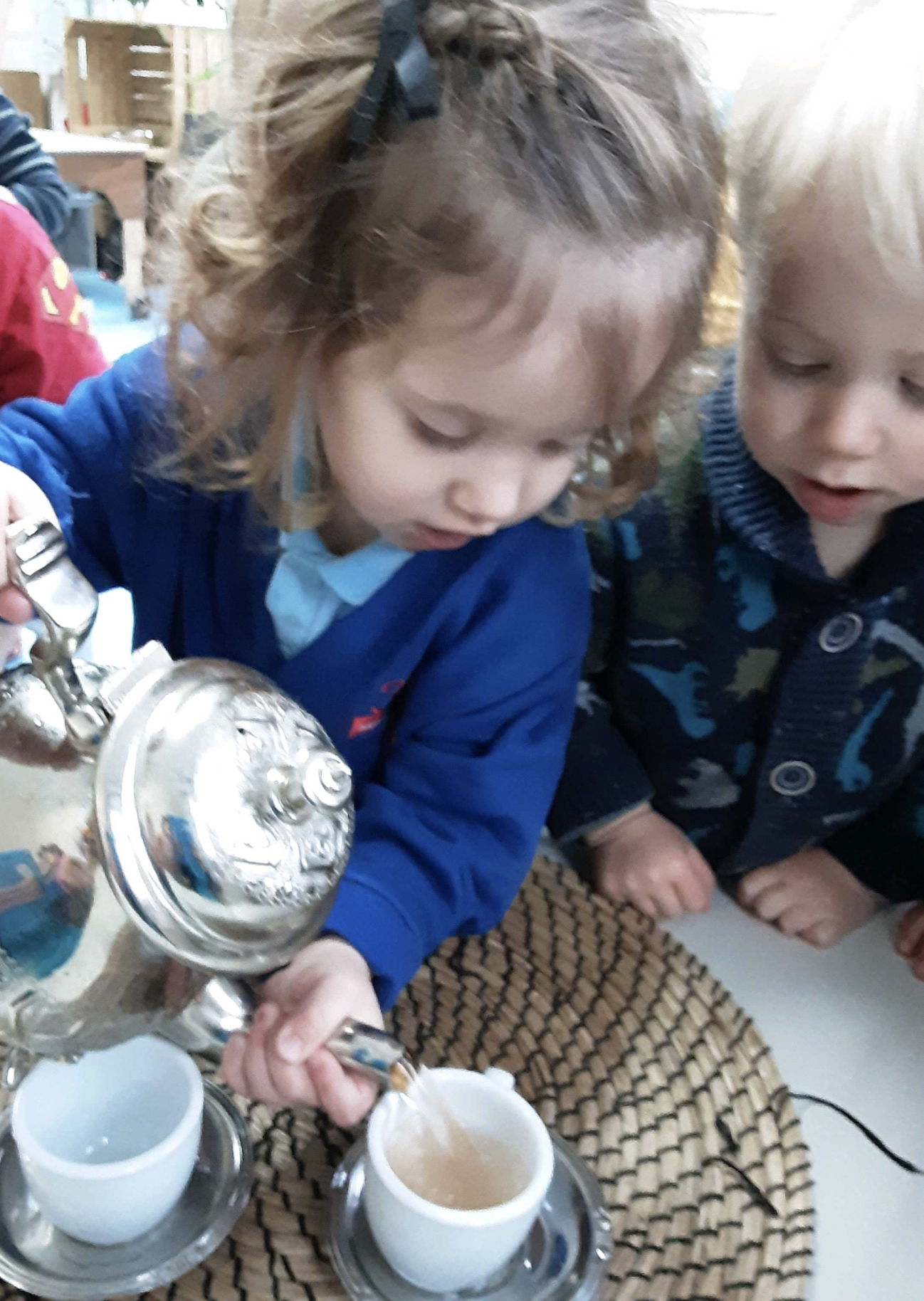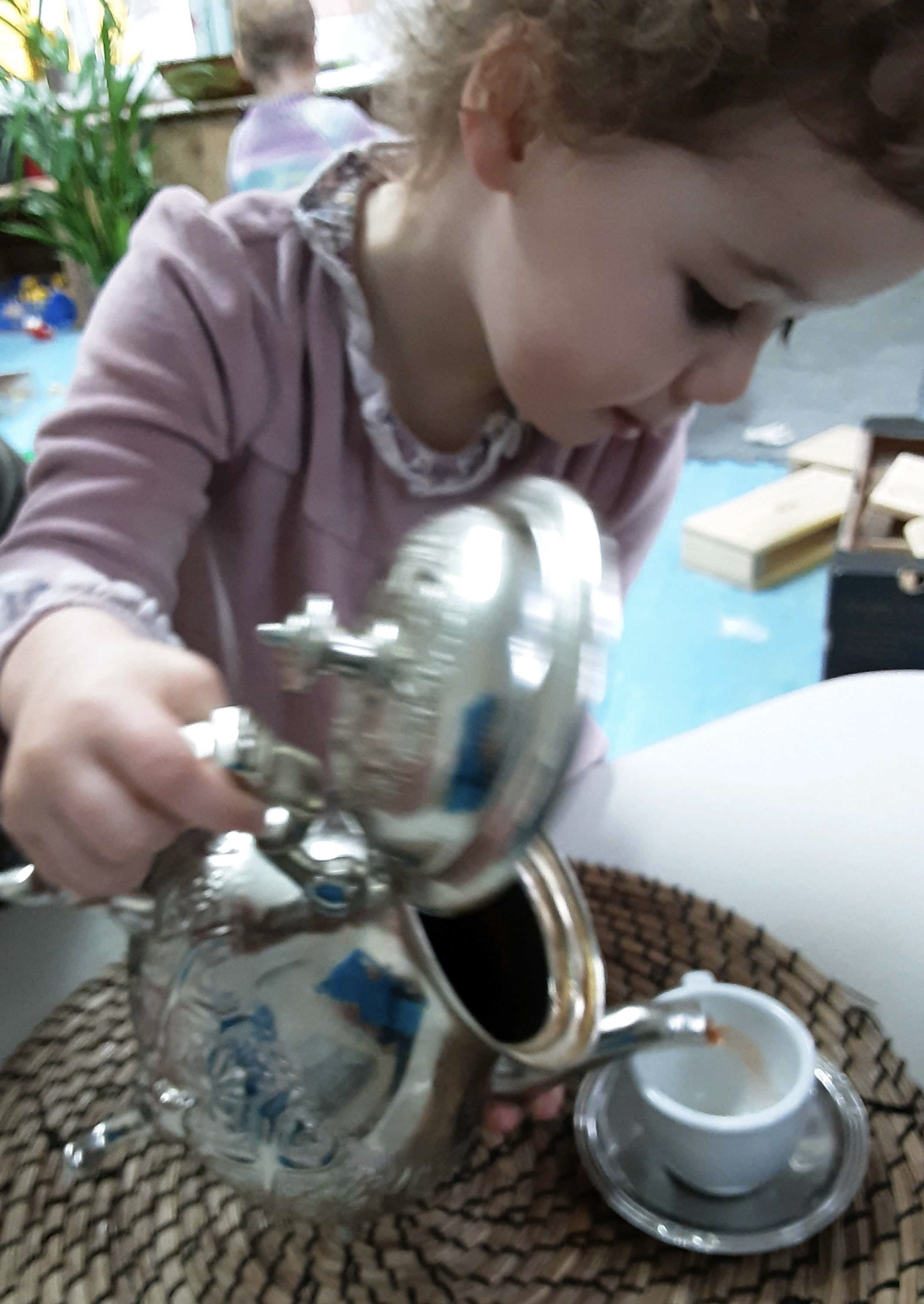Three Bears Blog
Purposeful use of colour
11th November - Laila Taha - Nursery Manager
Today our Little Bears have been colour matching with pasta! They practiced their concentration, fine motor pincer grip, colour recognition and problem solving skills to sort out the colourful pasta.
There is a common misconception that The Curiosity Approach embraces only neutral colours and uses no colours of any sort for any purpose. This couldnt be further from the use of colour in this pedagogy! Colour is intended to be used everyday throughout the day - with PURPOSE! - the important reflection on the use of colour is striking a balance between using colour with intended learning outcomes versus their being so much colour that it creates 'visual noise'.
Why we create neutral setting backgrounds in our rooms, environemnts and provision:
Maria Montessori said: “The child has a different relation to his environment from ours… the child absorbs it. The things he sees are not just remembered; they form part of his soul. He incarnates in himself all in the world about him that his eyes see and his ears hear.”
A HUGE array of colour on displays and in resources distracts the child from their thinking, their play opportunities and teachable moments, they can be made to feel totally overwhelmed. We therefore choose to place colours purposefully, to create learning opportunities specifically and often choose to use natural sources of colour where possible, such as from the autumn leaves, flowers, fruits etc.
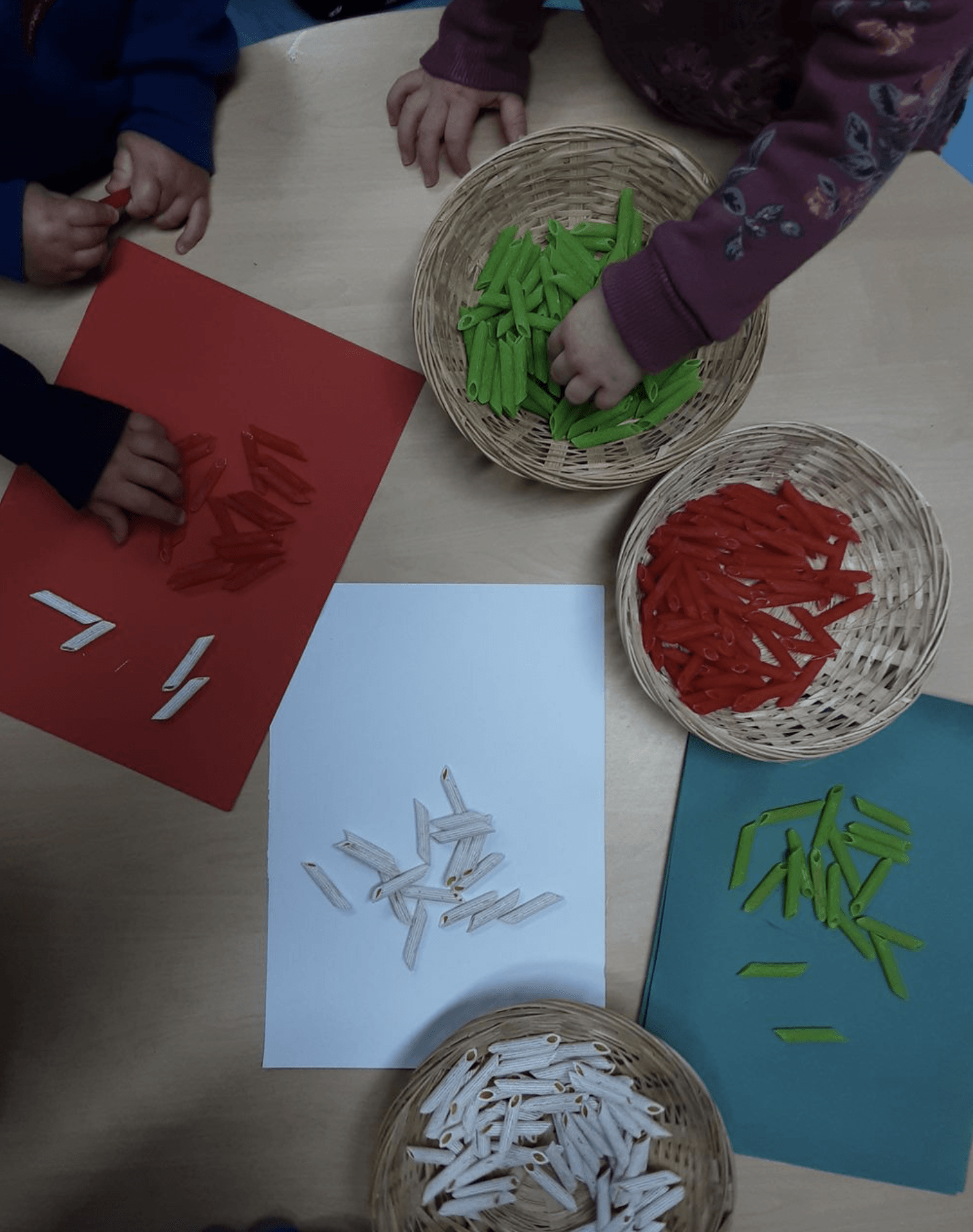
WHY do we explore a country of the month here at Three Bears?
10th October 2021 - Laila Taha - Nursery Manager
We look to intertwine The Prevent Duty, and our knowledge and understanding of this and British Values, intertwined with Personal, Social, Emotional Development and the importance of promoting resilience in our youngsters and Understanding of the World and building respect, tolerance and admiration for the array of different cultures and communities around our planet.
We want to question and action pl;an how much we can teach the children through their play, conversations rich in language and the enabling environments we facilitate.
We look to expose the little humans we provide an early years experience to day in day out, to the broad array of cultures and communities that lie right on our doorstep and spread far and wide across our planet. We teach the children to embrace their uniqueness, the unique child being a key theme to our early years curriculum and setting values.
The Birth to Five Matters document, a core document used at the setting describes the importance of a child’s experience in the world and their enhancement and connections made between their culture and community and those of others.
“Children build on their experiences; the wider and deeper their exposure, the greater the potential they have for secure development. Children need opportunities to develop what they know, to consolidate and apply learning from one context to another, and to develop new knowledge and skills. Children will build on experiences in the natural, built and virtual worlds.” - Birth to Five Matters Page 19.
“Development and learning are enhanced when there are connections and relationships between early childhood settings, home and other places and spaces in children’s lives. Connections across environments support children to bring their interests and “funds of knowledge” that may provide an anchor for them and an impetus for their learning. Children and families need to feel secure, accepted and that they belong - both within and beyond a setting. Diversity of communities must be respected and celebrated, widening each child’s sense of belonging and sense of place in the community, while the uniqueness of each family, regardless of differences is acknowledged and honoured.” - Birth to Five Matters Page 19.
Play is the Rocket Fuel for Child Development
I have just read a really interesting report - The Value of Play Report, written by the Real Play Coalition.
It starts off by telling the reader "play is the rocket fuel for child development". It talks about how children are driven by an innate desire to learn, spurred on by their natural curiosity about our world and the environments they are in. Even just the first paragraph teaches us so much, play is the basis for all development, physical, cognitive, social and emotional, imaginative...
Play is over recent decades becoming under threat, with the push towards academia and academic outcomes for children, even as young as our littlest babies, when you think about the EYFS statements that we are working towards, and this continues throughout their school life. This is at even more detriment as a result of the ever advancing technological age we are in. In the UK, outdoor play has declined by 50% over just one generation, is that not just terrifying?
That is why it's so important that we in early years recognise play, understand play, value play and promote it to each and every one of our wonderful families bringing their children to our doorstep each and every day. This is one of our major reasons WHY we chose The Curiosity Approach to become part of our ethos, our pedagogy. They have that exact emphasis, they value play above all else. Allowing children to play in the outdoors MORE, with real, authentic, natural resources, combatting the ever increasing trend towards a sedentary life style.
Read the first screenshot taken from the report to understand why we let our children play, on their terms, in their own ways, in their own time, here at Three Bears
26th April 2021
Laila Taha
Operations, Quality and Practice Manager
"The Real Play Coalition believes play is best understood as a set of feelings, actions and experiences that children enjoy. Play supports cognitive, social and emotional, physical and creative development." - The Real Play Coalition, 2018.
Authentic Resources... developing trust, supervised risk taking and a sense of self-esteem and self-confidence...
Laila Taha Operations Manager December 2020
Here at Three Bears Nursery we love to let the children have access to authentic (real!!)resources within the environments, wooden, metal, fabric and we are starting to when supervised in small group activities introduce ceramics - Big Bears LOVE to make tea, so this week Big Bears have enjoyed brewing fruit tea with Rabab using real life metal and ceramic materials
WHY?
When introducing materials such as ceramics we are sure to use them in small group supervised activities, building a sense of trust and equality between adults and the children. A child will pick up a plastic tea-set and know that it won't break, they can throw it, drop it bash it, and it'll remain in tact. The children are also very capable of being aware that a real ceramic or metal teaser is more fragile or can hurt if dropped on someones toe - they will take care of it and try to use it as they have seen the adults do. Therefore by allowing children to have access to these authentic resources we are allowing them to feel a sense of pride at being able to handle them, develop their self-esteem and their self-awareness and also their ability to take risks and assess them within supervised situations in an early years setting.
Read more here: https://www.thecuriosityapproach.com/.../why-we-dont-use...
